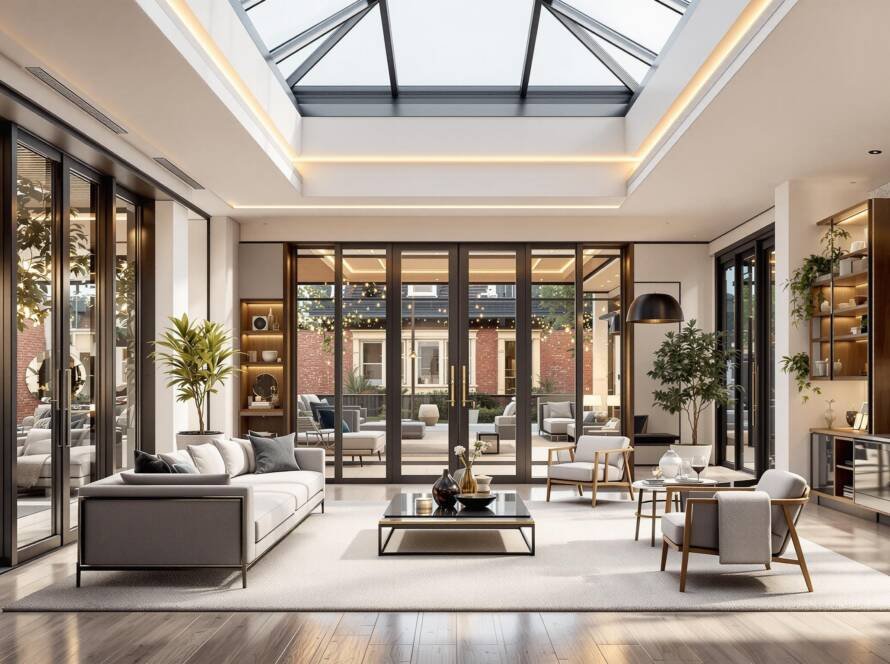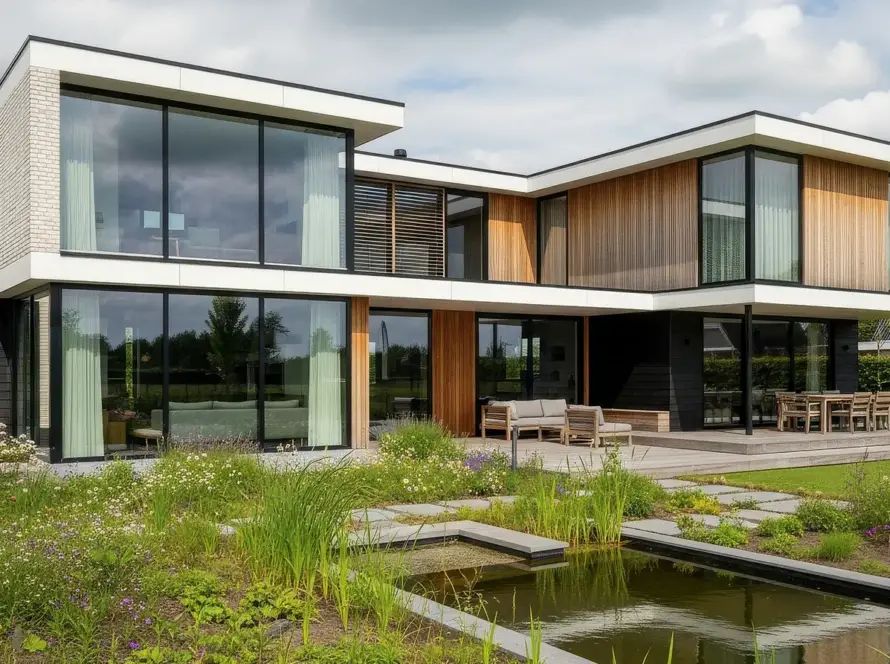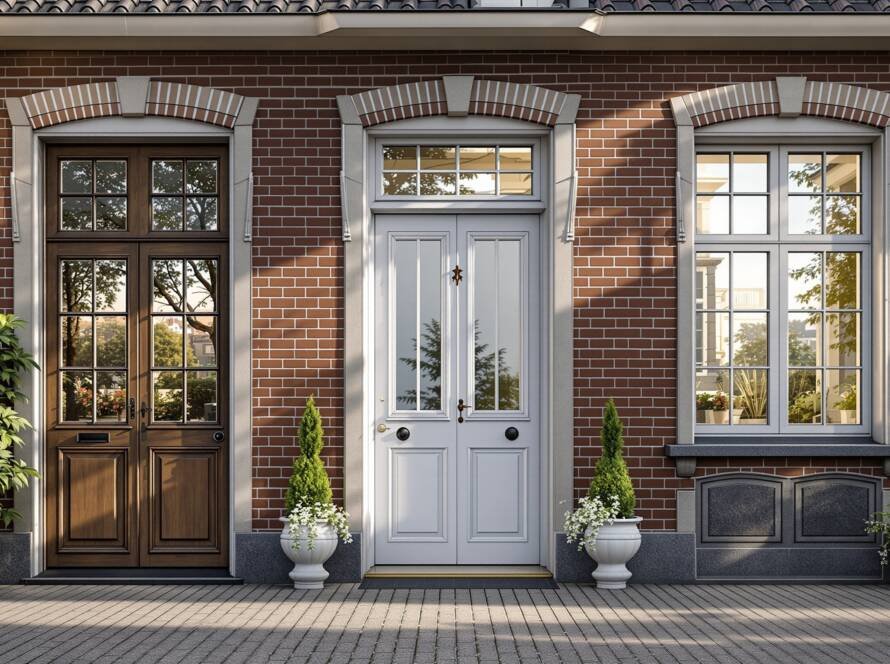The entrance to your home is more than just a point of entry; it is the first impression you make, a statement of style, and a reflection of the life within. In the Netherlands, where architecture beautifully blends historical charm with modern innovation, the front door plays a pivotal role in a home’s overall character. Moving beyond standard, off-the-shelf options, homeowners are increasingly seeking custom door designs in the Netherlands to create a truly unique and personal welcome. A bespoke entry door is not merely a functional element but a piece of custom craftsmanship that enhances kerb appeal, security, and personal expression.
This article delves into the world of personalized doors, exploring the materials, design elements, and considerations involved in creating a tailor-made entrance for your Dutch residence. Whether you live in a historic Amsterdam canal house, a classic *Jaren ’30* home, or a sleek modern villa, a custom door can elevate your property’s aesthetic and value.
Understanding the Basics of Custom Door Design
Before exploring the possibilities, it is essential to clarify what we mean by “custom” or “bespoke.” Unlike mass-produced doors found in large DIY stores, a tailor-made door is designed and built to your exact specifications. This involves a collaborative process where every detail—from the dimensions and material to the colour, hardware, and glazing—is chosen by you, for you.
- Bespoke Entry Doors: These are designed from scratch, offering complete freedom in style, size, and features to perfectly match your home’s unique architectural character and your personal taste.
- Tailor-Made Doors: This term emphasizes the precision of the fit. The door is crafted to the specific measurements of your door frame, ensuring optimal performance, insulation, and security, which is particularly important for older Dutch properties with non-standard dimensions.
- Personalized Doors NL: This highlights the core benefit—the ability to infuse your personality into the design. It’s about choosing colours, finishes, and hardware that tell your story.
Why a Custom Door is the Perfect Choice for Your Dutch Home
Opting for one of the many unique door styles Netherlands has to offer provides a range of benefits that go far beyond simple aesthetics. It is an investment in quality, security, and individuality.
Achieving Architectural Harmony
The Netherlands boasts a diverse architectural landscape. A standard door can look out of place on a historic building or fail to capture the minimalist essence of a modern home. A custom door solves this problem. You can commission a door that replicates the authentic style of a 17th-century canal house, complete with traditional panelling and a classic fanlight, or design a sleek, oversized pivot door for a contemporary new-build. The goal is to create a seamless transition between the exterior and interior, honouring the home’s architectural integrity.
Expressing Your Personal Style
Your front door is a canvas. Do you prefer the warm, natural appeal of solid oak, or the bold, industrial look of black steel? Are you drawn to the timeless elegance of brass hardware or the clean lines of brushed chrome? A custom design process allows you to make these choices. You can select a vibrant colour that stands out or a muted tone that blends elegantly with the brickwork. This level of personalization ensures your entrance is a true reflection of you, making your house feel more like a home.
Enhancing Security and Performance
Bespoke entry doors Netherlands are not just about looks; they are engineered for superior performance. You have control over the core materials and construction, allowing you to specify features that enhance security and energy efficiency. This can include multi-point locking systems, laminated security glass, and advanced insulation cores. Given the Dutch climate, a door with a high insulation value (low U-value) is crucial for preventing heat loss, reducing energy bills, and eliminating drafts, contributing to a more comfortable living environment.
Choosing the Right Material for Your Bespoke Door
The material you choose is the foundation of your door’s design, influencing its appearance, durability, maintenance, and cost. Each option offers distinct advantages suitable for different architectural styles and personal preferences.
A Comparative Look at Door Materials
To help you decide, here is a detailed comparison of the most popular materials for custom doors in the Netherlands.
| Material | Aesthetics | Durability & Maintenance | Insulation & Security |
|---|---|---|---|
| Solid Wood (Oak, Meranti, Afzelia) | Classic, warm, and timeless. Offers natural beauty and can be intricately carved and panelled. Perfect for traditional, rural, and *Jaren ’30* homes. | Very durable if properly maintained. Requires periodic staining or painting to protect against moisture and UV radiation. Prone to warping if not correctly treated and installed. | Excellent natural insulator. Solid construction provides a high level of security. Can be specified to be extremely thick for added peace of mind. |
| Aluminium | Modern, sleek, and minimalist. Allows for very slim frames, maximizing glass areas. Available in a vast range of powder-coated colours (RAL). Ideal for contemporary and industrial designs. | Extremely durable and resistant to rust and corrosion. Virtually maintenance-free, only requiring occasional cleaning. | Modern aluminium doors feature a thermal break to provide excellent insulation. Very strong and can be fitted with high-security locking systems. |
| Steel | Offers a distinct industrial or luxurious aesthetic. Often used for slim-profile “Crittall-style” doors with glass panels or imposing, solid pivot doors. | The strongest and most secure material available. Must be properly galvanised and powder-coated to prevent rust. Low maintenance once installed. | Can be thermally broken for good insulation. Unmatched in terms of security and impact resistance, offering the ultimate protection. |
| Composite | Highly versatile. Can mimic the appearance of wood with a grain-effect finish or have a smooth, modern surface. Available in a wide array of colours and styles. | Made from multiple materials (like PVC, wood, and insulating foam), making it extremely durable, weather-resistant, and low maintenance. Will not warp or fade. | Superior thermal insulation due to its foam core. The strong outer skin combined with a solid core and multi-point locks provides excellent security. |
Key Design Elements for Your Personalized Door
Once you have chosen a material, the real personalization begins. These are the elements that will make your door truly one-of-a-kind.
-
Style and Configuration
The overall style sets the tone. Will it be a traditional six-panel door, a modern flush door with clean lines, or something more ornate? Consider the configuration as well. You can add sidelights (glass panels on one or both sides) or a transom window (*bovenlicht*) above the door to allow more natural light into your hallway, a feature very common in historical Dutch homes.
-
Glass and Glazing
Glazing is both a functional and aesthetic choice. Privacy can be achieved with frosted, sandblasted, or reeded glass, while stained or leaded glass can become a stunning artistic feature. For energy efficiency, especially in the Netherlands, insist on double or triple glazing. This not only improves insulation but also enhances soundproofing, a welcome benefit in busy urban areas.
-
Hardware and Ironmongery
The hardware is the jewellery of your door. The choice of handle, letter plate, knocker, and hinges can dramatically alter the final look. A robust matte black handle complements an industrial-style door, while polished brass hardware adds a touch of classic elegance. Security is paramount, so ensure the door is fitted with a high-quality, certified locking mechanism. The right choice of tailor-made doors Netherlands professionals will guide you through secure and stylish options.
-
Colour and Finish
Colour is perhaps the most personal choice of all. You could opt for a traditional Dutch colour like *grachtengroen* (canal green) or a stately dark blue for a classic look. Alternatively, a bold, contemporary colour can make a powerful statement. For wooden doors, a translucent stain can highlight the natural beauty of the grain, while a solid paint finish offers maximum weather protection and a uniform look.
Practical Tips for Your Custom Door Project
To ensure your project is a success from start to finish, keep these best practices in mind.
- Consider Your Home’s Context: Take a step back and look at your house from the street. Ensure your door design complements the style of your windows, the colour of the brickwork, and the overall neighbourhood aesthetic.
- Prioritize Functionality: Think about your daily life. Do you need a wider entrance for accessibility? Is a low threshold important? Your custom door should be as practical as it is beautiful.
- Invest in Quality Installation: The most expertly crafted bespoke door will fail to perform if it is not installed correctly. Professional installation is essential to guarantee a perfect weather seal, smooth operation, and validated security.
- Plan for the Long-Term: Choose materials and finishes that align with the amount of maintenance you are willing to undertake. High-quality materials may require a larger initial investment but often pay for themselves through longevity and lower upkeep costs.
Conclusion: The Ultimate Expression of Home
A custom door is more than just an upgrade; it is a transformation. It provides a unique opportunity to blend aesthetic desire with practical necessity, resulting in an entrance that is secure, efficient, and deeply personal. By carefully considering the materials, design elements, and your home’s unique character, you can create a welcoming focal point that adds significant value and pride to your Dutch home for years to come. Investing in a custom door design is investing in the heart and identity of your property.




